Eniwa 72 ko(えにわ七十二候)
- Nanae Ichinohe

- 2021年5月18日
- 読了時間: 10分
Eniwa 72 ko, “ko” means a sign, is divisions of the season in Eniwa.
I corrected 72 signs of each season.
That has 24 major divisions, called "sekki”.
The 24 divisions are each split again into three for a total of 72 ko that last around five days each.
The names were also originally taken from China, but they did not always match up well with the local climate.
In Japan, they were eventually rewritten in 1685 by the court astronomer Shibukawa Shunkai.
In their present form, they offer a poetic journey through the Japanese year in which the land awakens and blooms with life and activity before returning to slumber.
But I felt that a climate in Eniwa is different from this form.
And older people often say that it has been changed because of global warming.
So, I rewrote the 72ko for the climate of Eniwa. And I'd like to show you Eniwa 72ko with some information about Eniwa life.
2/4-8
“Bulbuls finish eating all berries of mountain ash”
Fresh berries of this tree are bitter. But the bitterness is removed by a freezing-thawing cycle. Then bulbuls can eat it.
It means that it’s a time period of the coldest winter. We can get used to the cold weather by this period.
2/9-13
"We are attracted to Kawazu cherry blossoms”
In Shizuoka, where is the middle of Japan, has a warm climate. And there comes spring faster than here. We can see Kawazu cherry blossoms and Shizuoka people who dress lightly on the news when it becomes the best time to view those flowers.
In Eniwa, the beginning of spring is still far away.
2/14-18
“lingering HEAVY snow “
In the last period, we envy Shizuoka people. And we become happy because the snow is getting melted. But nature doesn't go easy on us.
Our city is covered by lingering HEAVY snow in this period.
On the other hand, this snow gives us a lot of pure water.
Sapporo beer and Naporin(famous fizzy drink in Hokkaido) are made from this water.
2/19-23
"A cycle of 4 cold days and 3 warm days (shi-kan san-on)”
In Japan, we have a lot of four-characters idioms.
Actually, such idiom does not exist.
The right idiom is a cycle of 3 cold days and 4 warm days (san-kan shi-on). San means 3, kan means cold, shi means 4, and on means warm. This idiom means that spring is around the corner.
But in Eniwa, the weather is still colder than in other areas of Japan.
That's why I increased the number of cold days.
2/24-28(29)
“A turtle wakes up from hibernation “
A turtle for a pet becomes active in this period.
The weather is definitely approaching the spring.
3/1-5
“A large hole appears on a snowy road surface“
The weather has been warm, and only snow and ice on utility holes are melted.
Then the large hole appears there.
You have to drive carefully and slowly in order to prevent damage to your tires and a bumper.
Nobody can claim for the damage against nature.
3/6〜10
"Hibernating insects surface"
Small insects surface and fly over the snow.
Cherry blossoms and plum blossoms are not brooming yet. It's too cold to accept that spring has come.
3/11〜15
"Narcisuss sprouts"
Now, let's ask ourselves by taking a deep breath through your nose.
How was it? Does it smell like Chinese chives? Did you plant it there?
Someone get food poisoning every year because of having misidentified the Narcisuss as the Chinese chive.
Chinese chives have a strong smell.
Please be careful.
3/21〜25
"Crocus sprouts"
Spring has come. In this period, many plants sprout here and there. The weather of Eniwa rushes into spring.
3/26〜30
"Start using a bike again"
The road was surfaced. Some people go to school or work by bike. Streets are more lively than wintertime.
3/31〜4/4
"Leisure facilities reopen"
Many leisure facility is closed for winter in Hokkaido. They will reopen from April.
And we have so many more options we can do on holiday.
Finally, wintertime is over.
4/5〜9
"Crocuses bloom"
Crocuses and Snowdrops start to bloom. And narcissuses, tulips, and honey azaleas will be following.
In Tokyo, a school entrance ceremony held in the full bloom of cherry blossoms, but in Eniwa, they have been sleeping yet.
4/10〜14
"Swans fly north"
Groups of swans return north in V-formations. Look at the sky, when you heard their chirping. They fly at any time of the day or night.
This is a soundscape of Eniwa in spring.
4/15〜19
"First distant thunder"
This is the time when the first thunder is observed. The weather becomes warmer and warmer, but sometimes the cold wind blows.
4/20〜24
"Grass sprouts, trees bud"
The trees were coming into leaf. The colors of them become softly and gently.
4/25〜29
"A strong south wind blows"
In this period, Eniwa has a very strong wind from the south. Sometimes carp streamer decorations, called "Koi-nobori", are blown away by this wind.
4/30〜5/4
"Cherry blossoms bloom"
Cherry Blossom Front, is a line graph illustrating the forecasted blooming dates of cherry blossoms (primarily of Someiyoshino )in various locations of Japan, have reached our city.
But the major of cherry blossoms in Eniwa is Ezoyamazakura. The color of the flower is a deeper pink than Someiyoshino.
5/5〜9
"Turips bloom"
The wind is still cold, but we have many sunny days.
Cherry blossoms are in full bloom.
5/10〜14
"Warms surface"
People who live in Eniwa begin to work in the home garden. They plow the soil and fertilize so that the garden will be ready for seedling at the end of May.
5/15〜20
"Crows start to nest"
In Japan, we need to change our wardrobe for the new season. But in Eniwa, it's too early to do it. We can't put away long-sleeve clothes yet.
5/21〜25
"Wisteria flowers bloom"
The sunlight is bright. We have perfect days for laundry, walking, running, or gardening.
It's time to plant vegetable and flower seedlings.
A week later, wisteria flowers will be in full bloom. You can see "Fuji-nami". Fuji means wisteria and nami mean wave.
The wisteria flowers flutter in the breeze like the sea wave.
5/26〜30
"Peonies bloom"
Home gardens become colorful.
The weather gets warmer, so people have a picnic with the family.
Lilacs also bloom. Sometimes it becomes rainy and cold in Hokkaido. We call this weather "Lila-bie”, Lila is a Lirac, and bie means cold.
5/31〜6/5
"Start to plant rice"
The weather has warmed up, so people have become more active.
They do gardening, Ume-shigoto(Japanese plum preparation), planting rice, and so on.
I often make umeshu (plum wine)or ume syrup every year.
6/6〜10
"Rosa rugosa blooms"
Roses grow thickly.
Rosa rugosa is a prefectural flower of Hokkaido. You can find it everywhere in Eniwa.
6/11〜15
"cuckoos start to sing"
In summer, the climate of Hokkaido was similar to that of Europe.
However, that is changed by global warming.
The rainy season has come to Hokkaido.
6/16〜20
"Last frost, strawberry grows"
In this term, we have the last frost.
We can enjoy strawberry picking. The field is larger than other prefectures' one.
6/21〜26
"A stag beetle has become an adult"
Around the summer solstice, we have an event, called "Hana-to-Kurashi ten" that is flower and life-themed festival. Visitors can enjoy shopping for flowers, eating local specialty food, and watching citizen performances.
Also, you can enjoy touring open gardens.
6/27〜7/1
"Haskap grows"
Haskap is blue berried honeysuckle, comes from "hashikapu" in Ainu* language.
"Hashikapu" means the thing that grows on a branch.
The haskap is a Rugby-ball-shaped berry and sourer than blueberries.
Fresh haskap gets damaged easily because of its thin skin.
So, Hokkaido is the only place you can appreciate it.
*Ainu is the indigenous people of Japan.
7/2〜6
"Hydrangeas bloom"
In Hokkaido, hydrangea blooms until early autumn.
And open gardens come into full bloom.
Especially, Megumino has many gardeners.
7/7〜11
"Tomatoes turn red"
It's been rainy. Sometimes, it becomes a cool day.
7/12〜16
"Warm winds blow"
Summer has come.
You can enjoy eating melons. And Hokkai Kanro(oriental melon), too. Taste is, of course sweet, but a little lighter than melons, such as a prince melon.
Until about 60 years ago, Kanro was a popular fruit that ordinary people eat in summer.
7/17〜22
"Chinese bellflowers bloom"
It's very hot. Sometimes, it becomes an extremely hot day like in Tokyo. The heat makes us want to swim or eat something cold.
In Eniwa, there are gelateria and some soft-serve ice cream shops that run by a rancher.
7/23〜28
"Gooseberries turn red"
You can harvest various vegetables and fruits in this season.
7/29〜8/2
"Wheat ripens and is harvested"
Two-thirds of domestic wheat production is from Hokkaido. The appearance of the wide wheat field blowing in the wind is like the surface of a lake.
8/3〜7
"Heat wave comes"
It's the more hottest season.
And we have an event called Tanabata.
It's a Japanese Festival known as the Star Festival in English.
People write their wishes on colorful paper strips and hang them on bamboo leaves.
Tanabata festivals are held on July 7th. But in several regions including Hokkaido, it’s held on August 7th(July 7th by Lunar calendar).
In Hokkaido, there is a custom called "Rousoku morai"(Getting candles for a treat). It’s similar to Halloween. Children go from house to house on Tanabata night. They sing “gimme candles or give you tricks".
However, this custom is obsolete. In Eniwa, we simply decorate bamboo with colorful paper strips and Origami.
8/8〜12
“Corn turns yellow “
We can enjoy eating corn. Japanese corn, especially in Hokkaido, it's soft and so sweet.
In Eniwa, you can buy it at a farmer's shop called "Kanona".
8/13〜17
"Cool winds blow"
It seems to close to the end of the summer.
In the morning and evening, it's cool. But, it's still hot during the day.
8/18〜22
"Many dragonflies in the sky"
You can find a lot of dragonflies at the park, farm, and garden.
In the park, some children enjoy hunting dragonflies.
8/23~27
"Salmon swims upstream"
Several rivers run through Eniwa.
Izari river is famous for the place where salmons swim upstream to lay their eggs.
8/28 ~ 9/1
" Ground cherry starts changing color"
It has been hot days. But cool breeze blows from around 3:00 p.m.
9/2 ~ 9/7
"Heat starts to die down"
It feels like autumn is setting in. That said, sometimes, it becomes a heavy hot day like a summer.
The temperature difference was extreme in this period.
9/8〜12
”Migratory birds come”
The first group of migratory birds passes over Eniwa from Russia. They move 4,000km from Russia to Japan.
Utonai lake, located in Tomakomai, is famous for their rest spot. It's about 25km from Eniwa to Tomakomai. So, you can hear their cry.
The route from Russia to Tomakomai which they use for migrate is called ”Hokkaido central flyway”.
9/13〜17
"Typhoon comes ”
Usually, a typhoon becomes a tropical cyclone when it made landfall near Hokkaido. However, recently it sometimes does not be downgraded because of global warming.
9/18〜22
”Crysanthemums bloom”
The days get shorter. And the night gains on the day.
We feel that the cold season is around the corner.
Around the Autumnal equinox holiday is Higan week.
In Higan week, most people visit family graves.
9/23〜27
”Mt. Youtei wears snow ”
The first snowfall is observed on Mt. Youtei.
It's 1,898m above the sea and 80km far from Eniwa.
When we hear this news, we feel autumn is in full swing.
9/28〜10/2
”Rice grows”
It's time to harvest rice.
In 1692, rice farming was started in the Oshima area where is South Hokkaido.
It was too difficult to grow for rice in the northern area.
However, in 1873, Mr. Nakayama succeeded in farming rice here in Eniwa.
Now, the self-sufficient rate of rice in Hokkaido is about 90%.
10/3〜7
”Great rains sometimes fall”
It rains a lot. And the maximum temperature is below 20 degrees Celsius in this season.
We need a light coat because it's so cold in the morning and evening.
10/8〜12
"Yukimushi fly"
A white spot floating with fluffy is an insect called "Yukimushi”. Yuki means snow and mushi means an insect.
And Yukimushi has two types, "Prociphilus oriens" and "Zelkova aphid".
It’s commonly known as aphids with a size of about 3 to 5 mm, which flies with white cotton-like secretions, such as a wax.
In October, "Prociphilus oriens" will fly from Todomatsu to Yachidamo for laying eggs.
In Hokkaido and Tohoku, people say it will snow about 20 days later if you find that insect.
10 / 13-17
"Swans come”
Tundra swan and whooper swan pass over Eniwa toward Lake Utonai in Tomakomai.
The speed at which swans fly is about 50 to 100 km / h, depending on the strength of the wind.
10 / 18-22
"Mt. Teine wears snow ”
Mt. Teine is a mountain with an altitude of 1,023m in Sapporo. The first snowfall of there is observed in this season. And it also begins to snow on the pass.
In Eniwa, gardeners begin to prepare for winter. Frost-tender plants have to move into the house.
10/23〜27
”First frost”
Most people turn on the heater. Some of them still use a stove. Others use an air conditioner. It becomes common recently because of global warming and technology development.
10/28〜11/1
"The first freeze"
People often say ”Have you changed snow tires?”
But most of them change it when it gets to December. It’s kind of a casual season greeting.
Eniwa has a big Halloween event. Because pumpkin is a local specialty. So, we decorate many orange pumpkins all over the city.
11/2〜6
”Insects hole up underground”
It is winter for us.
We cover plants to protect it against snow.
Sometimes it may be the first snow. But it melts soon. And it becomes cold rain. There isn't any snow on the ground.
11/7〜11
”The first snow ”
A snowflake is also called ”Rikka” in Japan.
These Kanji mean ”six and a flower”.
Because the snowflake has a hexagonal shape and it looks like a flower.
The first snow is observed here in this period.
11/12〜16
”Northwind blow away leaves from the tree”
Deciduous trees become only branches and trunks.
Leisure facilities will be closed because winter has come.
11/17〜21
”A frost column is surfaced”
When the underground temperature has a few degrees Celsius and the ground temperature is under 0 degrees Celsius, you can find the frost column in the morning.
11/22〜26
"Snow remains until the next morning"
Snow melts a little during the day and freezes at night.
You should be careful when driving a car.
11 / 27-12 / 1
"Bears stay in the den”
The bear goes into hibernation.
We also start wearing down coats/jackets, and every car wears winter tires.
12/2 ~ 6
"A little snow is left throughout the season”
The amount of snow that falls is greater than the amount of snow that melts.
There's still a part of the snow until spring.
12 / 7-11
"Start using sleds"
Sometimes a sled works as a stroller or as a carry cart.
Parents take children to and from kindergarten with a sled.
And the elderly people carry shopping bags.
But recently, most people use a car.
12 / 12-16
"The Great Egret has come”
One great egret comes by the pond of Megumino Central Park every year.
I don't know what it eats anything for alive here.
12 / 17-21
"Snow melts"
Even if there is a lot of snow, it will melt in the daytime.
People who work at ski resorts worry about the amount of snow accumulation.11/22〜26
"Snow remains until the next morning"
Snow melts a little during the day and freezes at night.
You should be careful when driving a car.
12 / 22-26
"Lament the want of snow"
Many people who live in Hokkaido feel warm when it has been snowing.
It seems like thick clouds prevent radiative cooling.
Children wear boots with boa, and snow suit.
12 / 27-31
"The long-awaited heavy snowfall"
The long-awaited snow is here.
Some people are looking forward to removing the snow.
They have full of motivation, and there are many people on the road due to the snow removal rush around 10 a.m.
The roads get narrowed by snow and people removing snow, so you must be careful when driving in residential areas.
1/1 - 4
"Satisfied with the snow"
It's the best season for ski and snowboard players.
Even though people have been waiting for snow so long, some of them are getting tired of it.
1/5〜9
“An Orange freezes"
If it becomes under -5 degrees Celsius outside, an orange is frozen.
The icy day will be increased.
1/10〜14
"A slide made of snow appears"
You can find it near the leisure facilities.
Staff sometimes prepare snow stairs or sleds, too.
1/15〜19
"We get used to cold days"
People have a conversation about the temperature outside without “minus” because it is always an icy day.
1/20 ~ 24
"Cold winds give the moon a good shine"
When it's cold, the air is clear and it makes the moon shining. When the wind blows, the stars twinkle beautifully. It is the best season for astronomical observation but from indoors.
1/25 ~ 29
"People are worried about snow festival"
A big snow festival called Sapporo Yuki Matsuri is held in Sapporo every year. The Self-Defense Forces and the citizens make snow sculptures.
Eniwa citizens secretly worry about whether there will be enough snow to make it.
Compared to the past, the amount of snowfall has decreased.
1/30 ~ 2/3
"Drift ice reaches Abashiri area"
It's a time when the drift ice arrives on the Sea of Okhotsk side.
Ice Festival are held in various places. Eniwa people also enjoy it.
(ex. Sounkyo Ice Festival, Chitose Ice Festival)



























































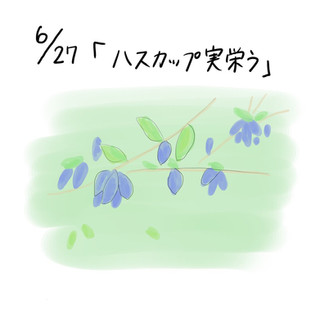

































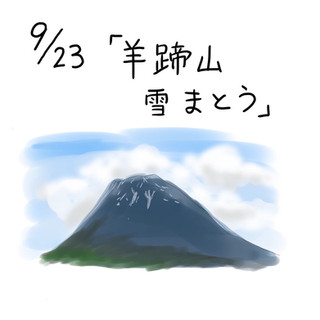







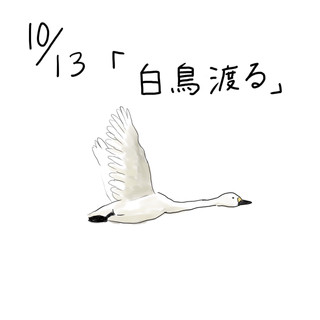





















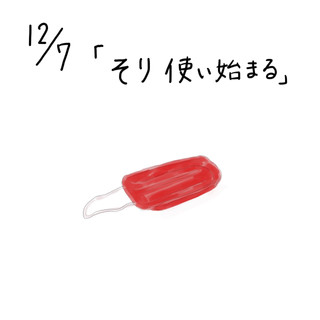















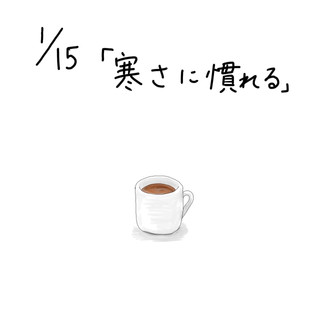








コメント